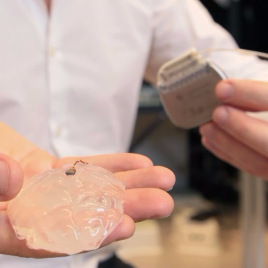Droppings from migratory seabirds are linked to cloud formation in the Arctic, offering a small cooling effect in the region. Clouds have offered a respite from rapid rise in Arctic temperatures, but previously there wasn’t much information available about the source of cloud growth. Using a combination of observations and computer modelling, a team of researchers found atmospheric particles linked to ammonia emissions from bird droppings. These particles originate around colonies of migratory seabirds, but later spread around the region and help cloud formation. Clouds shield the Arctic region from direct sunlight, contributing to a small drop in temperatures. Authors caution that the cooling effect of bird droppings is minor and doesn’t counter effects of anthropogenic climate change.
Authors:
B. Croft, G. R. Wentworth, R. V. Martin, W. R. Leaitch, J. G. Murphy, B. N. Murphy, J. K. Kodros, J. P. D. Abbatt & J. R. Pierce
Corresponding Canadian authors:
Betty Croft, Dalhousie University, Halifax, Canada, Email: Betty.Croft@dal.ca, Tel: +1 902 494 4261
Gregory Wentworth, University of Toronto, Toronto, Canada, Email: greg.wentworth@gov.ab.ca, Tel: +1 780 229 7236
Original paper published in Nature on November 15, 2016.


